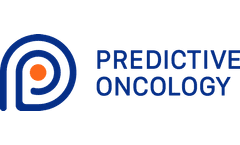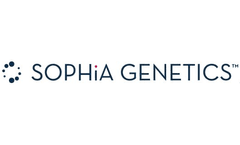Cancers Of The Breast Articles & Analysis
88 articles found
Population growth, aging populations and increases in cancer incidence have necessitated new approaches to identifying effective treatments. One such approach involves the repositioning, or repurposing, of drugs already FDA approved in either non-oncology disease states and/or approved in a limited number of tumor types. The repurposing of these drugs for new indications represents an ...
This method is particularly useful in identifying genetic abnormalities associated with cancer, such as gene amplifications, deletions, and translocations, which can play a critical role in the diagnosis and treatment planning of cancer patients. ...
The biological functions of platelets are preserved in platelet micromotors with their ability to target cancer cells and pathogens. Biofuels enable motor-shaped platelet micromotors to achieve directed propulsion. ...
Anti-Tumor APIs: Pioneering Cancer Treatment Anti-tumor Active Pharmaceutical Ingredients (APIs) are vital in today's medical landscape, addressing one of the most pressing health challenges: cancer. ...
Alfa Cytology has unveiled new services focused on therapeutic antibody development for bladder cancer research.Alfa Cytology, a prominent cancer research services supplier based in New York, proudly announces the launch of its comprehensive services for bladder cancer therapeutic antibody development. ...
Breast cancer remains one of the most prevalent malignancies affecting women worldwide, necessitating innovative approaches for effective treatment and research. Among the most promising strategies in this endeavor are the use of tumor models for breast cancer and the development of customized antibody-drug conjugates (ADCs). ...
In this study, researchers examine the effects of two drugs, everolimus and metformin, on triple-negative breast cancer. Everolimus blocks a protein called mTOR, while metformin blocks part of the mitochondria, the energy powerhouses of cells. ...
Some of the main functions of peptidomimetics include inhibiting or modulating enzymes & proteins, targeting specific receptors, and enhancing drug stability & bioavailability.Specifically, peptidomimetics can bind to enzymes and block their activity, making them useful in the development of cancer treatment. In addition, peptidomimetics can disrupt or potentiate ...
CD BioSciences has launched new services on anti-centrosome antibody development to assist cancer preclinical research. It is committed to providing full packages from antigen synthesis to antibody generation and manufacturing. ...
ESMO updated its recommendations for NGS in advanced cancers this year, urging broader use of NGS in additional cancer types and the inclusion of tumor-agnostic biomarkers. The ESMO Precision Medicine Working Group (PMWG) first published its recommendations for when to use next-generation sequencing (NGS) in routine practice for patients with metastatic cancers in 20201. At that time, based ...
Alfa Cytology has announced pancreatic cancer vaccine development services to improve the efficacy and safety of related vaccines. Alfa Cytology, a biotech company composed of scientists, bioinformatics, and oncologists, has recently announced its pancreatic cancer vaccine development services to provide further strategies for cancer therapy ...
Breast cancer is a type of cancer that begins in the cells of the breast. ...
Alfa Cytology has announced tumor models customization service for pancreatic cancer research. Alfa Cytology, a biotech company specializing in cancer research, has recently unveiled the service on pancreatic cancer tumor model customization to dig into the generation and development of pancreatic cancer and correspondingly ...
They are used in the treatment of cancer, particularly breast and ovarian cancer. Terpenes are a large class of natural compounds found in plants. ...
Since the FDA approved the first oral small molecule targeted therapy for tumors-tamoxifen targeting the estrogen receptor (ER)-in 1977 for the treatment of breast cancer, small molecule drug development has typically focused on screening for high-affinity inhibitors. ...
In recent years, researchers have focused on understanding the functions of CDH1 and its implications in cancer development. This blog post aims to shed light on what CDH1 protein does, its role in cancer, and the future research directions in this field. ...
The binding of α-KG to the ATPase subunit decreased its ATP synthesis capacity, reduced oxygen consumption, and increased autophagy in nematode and mammalian cells in the experiment, revealing a mechanism by which α-KG, a key metabolite, mediates longevity. 5. Targeting of triple negative breast cancer cells by disulfiram Triple negative ...
Alzheimer's disease modelling has moved from simple organisms like yeast and worms to sophisticated mouse models, each offering insights into specific facets of disease biology and pathophysiology. Cancer models, especially those of breast cancer and leukemia, have been instrumental in understanding the disease's biology, its dynamic interaction ...
It is used to treat adult patients with metastatic triple-negative breast cancer (mTNBC) and locally advanced or metastatic urothelial cancer (UC) who have received at least 2 therapies in the past. ...
Denosumab inhibits bone resorption and reduces the risk of fractures and has been approved for the treatment of postmenopausal osteoporosis and osteoporosis in men.(4) Selective Estrogen Receptor ModulatorsSelective estrogen receptor modulators, which act as estrogen-like and estrogen-like antagonists, reduce the risk of invasive breast cancer in postmenopausal ...












